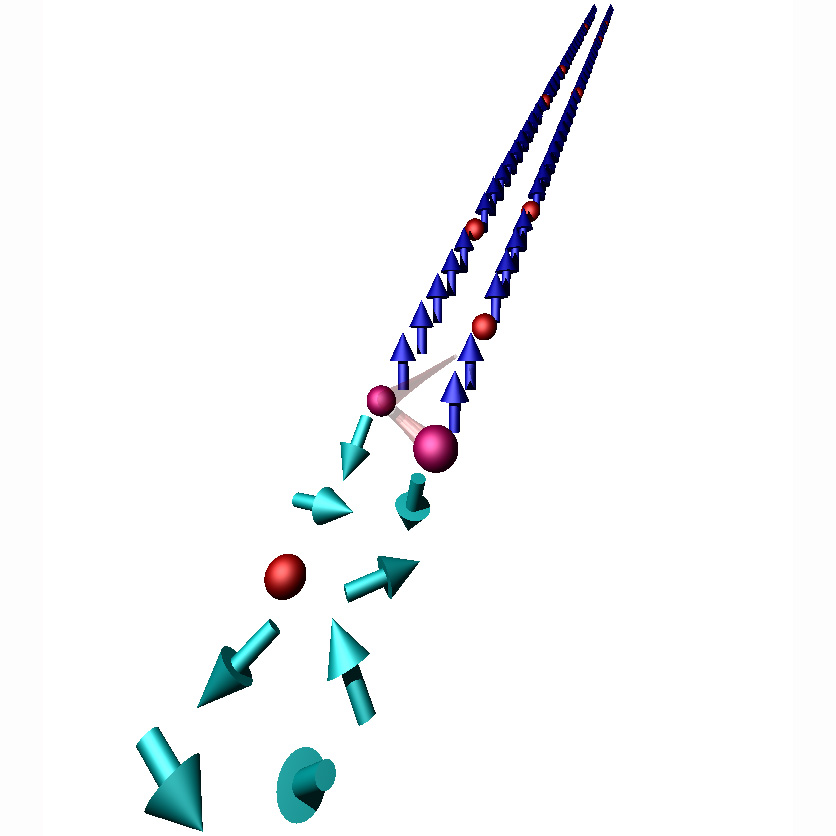| Mott Transition | Mott Physics | Frustrated Magnet | Spin Chain | Metallic Ferromagnetism | Magnetic Transition | Theoretical Approaches |
 There are several mechanisms that stabilize metallic ferromagnetism: for example, a large density of states and Hund couplings are known to work in favor of ferromagnetism. On the other hand, purely electronic correlations can also cause ferromagnetism. The Nagaoka theorem is a typical example: the theorem guarantees the ferromagnetic ground state in a system with one hole in the limit of strong repulsive interactions. To realize metallic ferromagnetism, a macroscopic number of holes have to be able to move. The question arising here is whether a ferromagnetic state with a macroscopic number of mobile holes can be stabilized by purely electronic correlations. Becasuse the ground states of a Hubbard chain are degenerate with respect to spin degrees of freedom in the limit of strong repulsive interactions (U = ∞), we consider a two-leg Hubbard ladder. Since this model is still too difficult to say something exact even at U = ∞, we further take the limit of large interchain hopping. In this limit, I proved that the ground state is ferromagnetic above quarter filling (electron density n > 1/2) and a spin-singlet state for n ≤ 1/2 [1]. The validity away from this limit has been confirmed numerically using the density-matrix renormalization group (DMRG) method [1].
There are several mechanisms that stabilize metallic ferromagnetism: for example, a large density of states and Hund couplings are known to work in favor of ferromagnetism. On the other hand, purely electronic correlations can also cause ferromagnetism. The Nagaoka theorem is a typical example: the theorem guarantees the ferromagnetic ground state in a system with one hole in the limit of strong repulsive interactions. To realize metallic ferromagnetism, a macroscopic number of holes have to be able to move. The question arising here is whether a ferromagnetic state with a macroscopic number of mobile holes can be stabilized by purely electronic correlations. Becasuse the ground states of a Hubbard chain are degenerate with respect to spin degrees of freedom in the limit of strong repulsive interactions (U = ∞), we consider a two-leg Hubbard ladder. Since this model is still too difficult to say something exact even at U = ∞, we further take the limit of large interchain hopping. In this limit, I proved that the ground state is ferromagnetic above quarter filling (electron density n > 1/2) and a spin-singlet state for n ≤ 1/2 [1]. The validity away from this limit has been confirmed numerically using the density-matrix renormalization group (DMRG) method [1].
[Related paper]